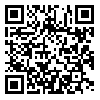2- کارشناس ارشد مدیریت خدمات بهداشتی درمانی، گروه مدیریت خدمات بهداشتی درمانی، دانشکده مدیریت و اطلاع رسانی پزشکی، دانشگاه علوم پزشکی اصفهان، اصفهان، ایران ,
3- دکترای مدیریت خدمات بهداشتی درمانی، مرکز تحقیقات مدیریت و اقتصاد سلامت، دانشگاه علوم پزشکی اصفهان، اصفهان، ایران
4- دانشجوی دکترای سلامت در بلایا، دانشکده مدیریت و اطلاع رسانی پزشکی، دانشگاه علوم پزشکی ایران، تهران، ایران
5- استادیار گروه مدیریت خدمات بهداشتی درمانی، دانشکده مدیریت و اطلاع رسانی پزشکی، دانشگاه علوم پزشکی اصفهان، اصفهان، ایران
Background and Aim: Almost one out of 10 patients who are admitted in hospitals experience “never events” while researches show that about half of these harms are preventable through the utilization of Failure Modes and Effects Analysis (FMEA). This study aims to identify and evaluate the risks of care processes in three wards of Alzahra University Hospital of Isfahan and suggest some interventions for reducing these risks.
Materials and Methods: This was a cross-sectional study, which identified high-risk processes using FMEA in respiratory, gastroenterology and rheumatologic wards of Alzahra Hospital during the years 2014-2015. The study population comprised clinical staff members who worked in these three wards and were familiar with clinical care processes. The focus group team was selected through purposive sampling method. Finally, the information was gathered in standard FMEA work sheets and analyzed with SPSS software.
Results: A total of 72 clinical care processes were identified, and the 73.5% of the focus group members rated "blood and its products transfusion process" as the most risky care process. The step "checking the incompatible of patient's information and blood lable and its products" was the most dangerous step (with PRN = 300). The findings showed that human and equipment failures were the main reasons of facing the “never events” in these wards.
Conclusion: Risk management tells us that the efficiency and quality of care can be promoted by preventing errors through human resource training and proper maintenance of medical equipment.
| Rights and permissions | |
 |
This work is licensed under a Creative Commons Attribution-NonCommercial 4.0 International License. |


